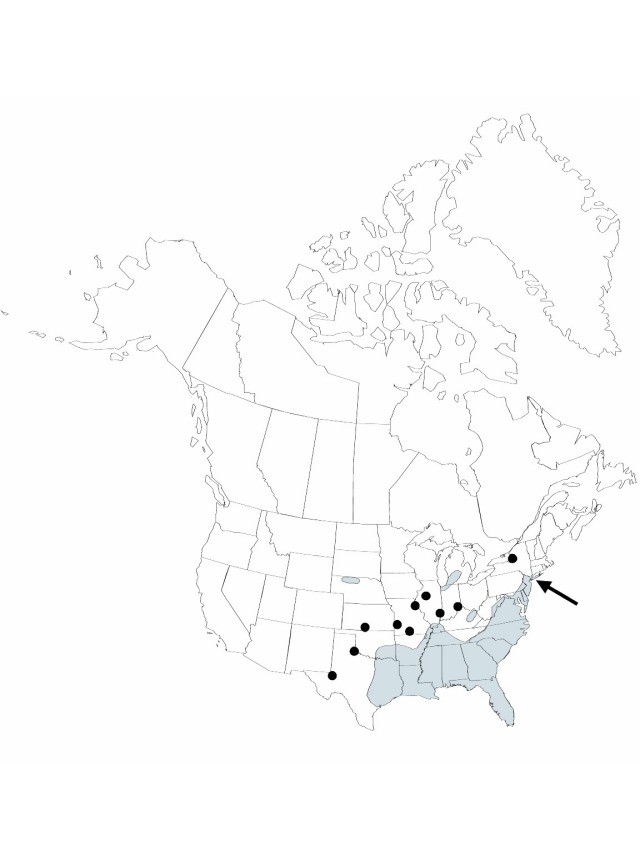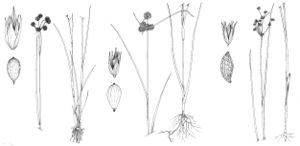Juncus scirpoides
in J. Lamarck et al.,Encycl. 3: 267. 1789.
Herbs, perennial, rhizomatous, tosometimes nearly cespitose, 0.8–7 dm. Rhizomes usually tuberous, 2–4 mm diam. Culms erect, terete, 1–3 mm diam., smooth. Cataphylls 0–1. Leaves: basal 1–2, cauline 2–3, green; auricles 1–2 mm, apex rounded, membranaceous; blade terete, 2–23 cm × 1–2 mm, distal cauline leaf blade 1.6–26 cm, equaling or longer than sheath. Inflorescences terminal panicles of 1–23(–32) heads, 2.5–9 cm, branches ascending to erect; primary bracts erect; heads 20–60-flowered, spheric or usually lobed, 6–11 mm diam. Flowers: tepals green to straw-colored, lance-subulate, 2–3.5 mm, nearly equal, apex acuminate; stamens 3, anthers 1/3 filament length. Capsules exserted, straw-colored, 1-locular, lance-subulate, 3–4 mm, apex tapering, remaining attached at tip, valves not separating at dehiscence, fertile throughout or only proximal to middle. Seeds oblong, 0.4 mm, not tailed; body clear yellow-brown.
Phenology: Fruiting early summer–fall.
Habitat: Wet sandy soil, salt marshes, lake shores, ditches, meadows, wet woods
Elevation: 0–1400 m
Distribution

Ala., Ark., Del., D.C., Fla., Ga., Ill., Ind., Kans., Ky., La., Md., Mich., Miss., Mo., Nebr., N.J., N.Y., N.C., Okla., Pa., S.C., Tenn., Tex., Va., W.Va.
Discussion
Selected References
None.
